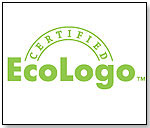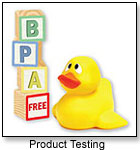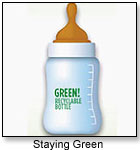
November 21, 2025


| “(M)anufacturers will be properly educating the consumer and taking steps to protect themselves against possible legal action.”—Susan Herbert, TerraVeritas |
 “Green awareness has grown throughout the toy industry due to many factors — product safety issues, wider realization of our precarious planet, and a broadening of principles to reflect daily practices,” toy expert Dr. Stevanne Auerbach (aka “Dr. Toy”) told TDmonthly.
“Green awareness has grown throughout the toy industry due to many factors — product safety issues, wider realization of our precarious planet, and a broadening of principles to reflect daily practices,” toy expert Dr. Stevanne Auerbach (aka “Dr. Toy”) told TDmonthly. Go for Multi-Attributes. Retailers and manufacturers should avoid focusing on a single issue and instead include details about how their toys or baby products reduce multiple environmental impacts. A wooden toy can have its raw materials certified by a credible third-party such as the Forest Stewardship Council for sustainable forestry practices, while other impact areas such as packaging, chemicals used in processing, and greenhouse gases emitted during the manufacturing process should also be addressed. While single-environmental-attribute claims such as energy efficiency are a step in the right direction, multi-attribute claims take a broader look at the lifecycle of a product.
Go for Multi-Attributes. Retailers and manufacturers should avoid focusing on a single issue and instead include details about how their toys or baby products reduce multiple environmental impacts. A wooden toy can have its raw materials certified by a credible third-party such as the Forest Stewardship Council for sustainable forestry practices, while other impact areas such as packaging, chemicals used in processing, and greenhouse gases emitted during the manufacturing process should also be addressed. While single-environmental-attribute claims such as energy efficiency are a step in the right direction, multi-attribute claims take a broader look at the lifecycle of a product. | “A key issue is that manufacturers are required to test for only a handful of chemicals in children’s products.”—Dr. Sally Edwards, Lowell Center for Sustainable Production |
 Focus Your Message. Dr. Edwards recommended that manufacturers and retailers develop relationships with their suppliers to ensure that they know the chemicals and materials used in making their products. Barbara Rainville, Maple Landmark Woodcraft’s marketing manager, told TDmonthly that her company’s Vermont-made wooden toys are tested for lead and phthalates. Interestingly, she pointed out that “lead-free” claims get better reception from consumers because the health implications are well understood, whereas they seem less receptive to claims around phthalates since this is a relatively new issue with conflicting science.
Focus Your Message. Dr. Edwards recommended that manufacturers and retailers develop relationships with their suppliers to ensure that they know the chemicals and materials used in making their products. Barbara Rainville, Maple Landmark Woodcraft’s marketing manager, told TDmonthly that her company’s Vermont-made wooden toys are tested for lead and phthalates. Interestingly, she pointed out that “lead-free” claims get better reception from consumers because the health implications are well understood, whereas they seem less receptive to claims around phthalates since this is a relatively new issue with conflicting science.
Copyright © 2025 TDmonthly®, a division of TOYDIRECTORY.com®,
Inc.